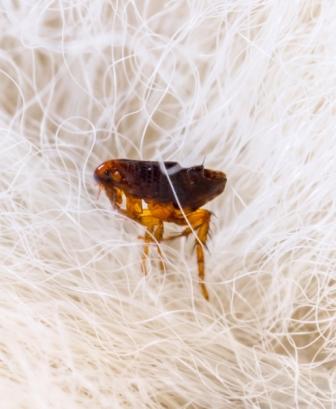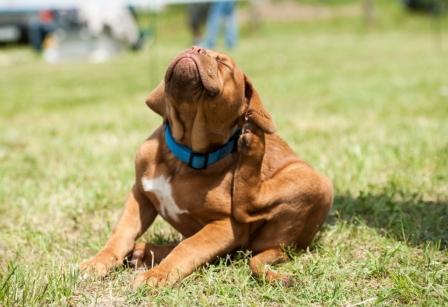Fleas
Flea is the common name for the order Siphonaptera, including roughly 2,500 species of small flightless insects that are external parasites of mammals and birds. Adult fleas typically grow to about 3 mm (0.12 in) long, are usually brown, and have narrow bodies that allow them to move through their host's fur or feathers. They do not have wings, but have strong claws for clinging to hosts. Fleas have mouth-parts adapted for piercing skin and sucking blood, and hind legs extremely well adapted for jumping. Fleas can to leap a distance of some 50 times their body length.

The lifespan of an adult flea can vary from two months to two years. Fleas go through four lifecycle stages: egg, larva, pupa, and adult. Some species breed all year round while others synchronize their activities with their hosts' life cycles or with local climatic conditions. Flea populations consist of roughly 50% eggs, 35% larvae, 10% pupae, and 5% adults. Flea larvae are worm-like with no limbs; they feed on organic debris left on their host's skin. Fleas can carry diseases dangerous to humans – most notably bubonic plague. Although there are occasional cases of plague in tropical and some temperate regions, the disease in humans can be controlled by early diagnosis and antibiotics.
Control of Fleas Around the Yard
Where do fleas live outside? They can live in yards and in wildlife areas. Fleas like high grass, sand, sheds and debris – places where they can find shade and humidity. These areas, such as the grass underneath a shrub, provide the perfect conditions for all pre-adult stages of the flea's life cycle.

You can make your property around the home unattractive to fleas. Because fleas do not thrive in short vegetation, they are seldom a problem in well-maintained lawns. Keep your grass mowed and keep weeds cut. Use cedar mulch – which is known to repel fleas. Insecticide products can also be used effectively. Usually, one or two applications per season will control fleas in landscaped areas. Treat when other pests first appear - normally in the May – June time frame. Note: this treatment is not a substitute for flea control on pets. LebanonTurf Insecticide Products for Flea Control
LebanonTurf has several easy to apply granular products containing insecticide active ingredients that are effective and labeled for flea control. The products contain bifenthrin (either on fertilizer on an inert carrier), Allectus® (on fertilizer), Sevin® (on an inert carrier) or lambda-cyhalothrin (on fertilizer in combination with imidacloprid). Be sure to read and follow label directions when using these products.
Consider the following products for controlling fleas:
ProScape 16-0-8 43% MESA .069 Bifenthrin
Lebanon Pro 17-0-3 40% SCU 3% Fe .225 Allectus
Other options can be found in our insecticide product section
Allectus and Sevin are registered trademarks of Bayer Environmental Science.